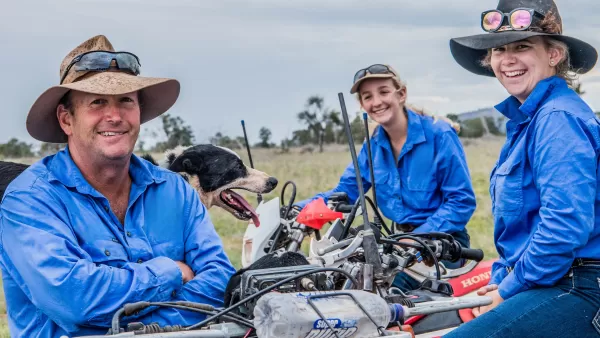Queensland Sugar Cane & Sweet Potato Farm
Energy Savings: 21% | Cost Savings: $69,658 | Capital Cost: $236,000 | CO2 Savings: 15.2 | Project Status: implemented
Industry:
Sugarcane
Location:
Wide Bay Burnett
Pump Type:
Centrifugal
Irrigation Type:
Drip, Travelling gun
Technology:
Irrigation and Pumps
A sugarcane and sweet potato farming enterprise located in Moore Park Beach could benefit from a recent Energy Savers Audit. Farming requires constant decision-making to maximise production and profit. Crops are often rotated due to season changes, weather variations, and higher-value products though sometimes the systems in place are outdated.
The total area of cropping lands consists of 64.4 ha and is serviced by two pumps. The current irrigation system is run by two individual irrigation pumping units. Pump site one (Bottom pump) supplies water to 20.8 ha of sweet potato crops through trickle irrigation. It has a high input flow rate and is capable of sustaining systems like a low-pressure lateral move. This system currently uses mechanical valves to manage the fluctuation in supply pressure and to reduce pump output. Pump site two (Top pump) supplied water to 23.2 ha of sugarcane through a big gun traveling irrigator. It also has a high input flow rate and is capable of the simultaneous operation of up to three travelling gun irrigators. It too was installed prior to the development of variable frequency technology and uses mechanical valves. Both pumps receive their water supply from the Bundaberg Irrigation Water Supply system which is managed by Sunwater.
Energy consumption from the two pumps sites showed that a total of 91,453 kWh at a cost of $24,226 was used during the 2018-2019 period. A recent energy audit showed how improving the current systems can lead to energy and cost savings. The recommendations explored in the audit included:
- Install two Variable Frequency Drives (VFD) to existing irrigation systems.
- Complete electrical works to move to Tariff 33.
- Replace existing irrigation systems with lateral move irrigators (50% share).
Table 1. Energy savings from audit recommendations
| Recommendations | Annual Energy Savings (kWh) | Annual Cost Savings ($) | Emission Savings (tCO2-e) | Capital Cost ($) | Payback Period (years) |
| Install VFD in two pumps | 35,940 | 10,404 | 28.8 | 19,000 | 1.9 |
| Change to Tariff 33 | – | 6,261 | – | 5,000 | 0.8 |
| Change irrigation system | 18,747 | 69,658 | 15.2 | 236,000 | 5.4 |
| Total | 54,687 | 86,323 | 44 | 260,000 | 2.7 |
Installing lateral move irrigators on both systems generates cost reductions from energy savings and due to a reduction in the operating head and increased pumping flow rate of the systems. The solution could also result in an increase in production capacity of up to 20% per hectare of sugarcane, with 350 tonnes estimated per year. Also, additional annual sweet potato production is estimated in 100 t/sp valued at $10/18kg carton net of harvesting, representing an increase of $2,750 per ha ($55,000 per year).
The combined effect of the recommendations will reduce the annual energy demand by around 54,687 kWh saving $20,073 in energy costs, with a potential net return from improved productivity estimated at $66,250.
The farmer proceeded to replace the irrigation system with lateral move irrigators, with potential energy consumption savings of 21%, costs savings of 287% given productivity gains, and carbon emission savings of 15.2 tCO2-e per year. Actual savings will be updated once the measurement and verification process is complete.
Table 2. Pre and post audit energy consumption, costs, and energy productivity savings
| Metric | Pre-audit | Post-audit | Reduction (%) |
| Energy Consumption (kWh) | 91,453 | 72,706 | 21 |
| Cost ($) | 24,266 | -45,392 | 287 |
| Energy Productivity (kWh/ha) | 1,420 | 1,129 | 21 |
An energy audit is a good investment
An energy audit is a great first step in moving a business towards a more efficient future by reducing energy use, costs, and carbon emissions on site.
The Energy Savers Plus Extension Program was delivered by the Queensland Farmers' Federation with support and funding from the Queensland Department of Energy and Public Works.

